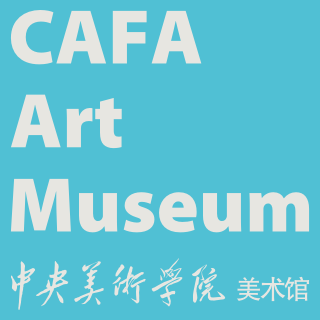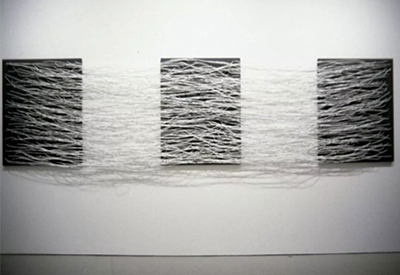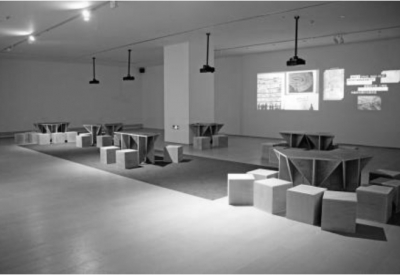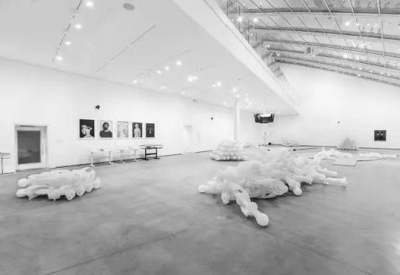2019-02-25
14555 read
Marc Quinn is an acclaimed British artist. The first work of his that came to our knowledge was Self, the blood head, from which our fascination with him began. We often wonder, at the present time, how a contemporary artist would work on, think about and confront the vastness of art. It is not a question that everyone can respond to or address profoundly; as a result, the distinctions and diversity of art have developed as it is now. Marc Quinn is an artist who has an intuitive sense for life; it does not come from any intentions of lecturing others, or a posteriori rules for regulating what art is or not. I have been to the UK many times in the past three years and visited Quinn’s studio four or five times, during which I enjoyed our conversations, including a formal interview. As well as having read multiple catalogues and numerous publications on him, I was able to look at and learn about Quinn through a close-up lens. His art career path manifests the fact that the key of making art is by reflecting on life and thinking liberally about the world. Since childhood, he has nurtured a curiosity in things and materiality in general, which is themost basic and raw human quality; as long as one knows how to utilise, practise and develop it, it can be transformed into art that is systematic and meaningful. The presence of art speaks for the essence of itself: boundless imagination and free will.As the fruit of Quinn’s boundless imagination, he has created art such as making breads to replicate the shape and lines of his own hands. Each person has unique palm lines. When you eat the breads, they become a part of your body, an incarnate of yourself. The act can be further extended to the notion of Holy Communion bread, therefore eating the breads, likewise, is like a conduit to the sacred. This extended imagination has transcended any art forms and techniques; without the former, the latter would profoundly lose its significance; and art, nominally, would fail to have its initial impetus and fundamentality.In the realm of the contemporary, art is constantly in flux – partly because we have a developed fine art education and communication infra-structure, whereby people, both art professionals and the general pub-lic, have their own prior expectations and presuppositions about art. If something were to fall out of their range of known methodologies or patterns for art, one might expect misreading and suspicion to arise; even the validity of being regarded as ‘art’ would be in question. However, contemporary art intends to disregard all the rules; it can only reconcilethe intuition of the true self and reflections on life when the application of art forms becomes the least important constituent. Marc Quinn, for instance, was not bound to social or ethical norms when he pondered the human phenomenon of ‘incomplete bodies’: he noticed how the fragmented classical statuary in museums was highly admired by viewers as a paradigm of art; and how this anti-utilitarian, entrenched aesthetic perspective consciously overlooks the disparity in the real life of disability and the disabled, who are undoubtedly human beings with great life value and dignity. This inspired Quinn to make a sculpture of his artist friend Alison Lapper, Alison Lapper Pregnant. This sculpture depicts a nude Alison who was born without arms and with shortened legs, in pure white Carrara marble, gazing far forth and looking serene, solemn and peaceful. In 2005, it was chosen by the commissioning committee in London to sit on Trafalgar Square’s fourth plinth. This sculpture raised widespread attention and debate in that year and an amplified reinterpretation even featured in the London Paralympics opening ceremony in 2012, leading to worldwide celebration. This work can only be borne of a reverence for life; it is not constrained by any prior doctrines; and its existence is glorified by the thoughts about life and the sanctified beings. Quinn’s Self(1991) has become an internationally-recognised classic in contemporary art history, as a life-size cast of the artist’s head made up of ten pints of his own blood extracted and stored over a period of several months. The work is cryogenically frozen and displayed in a specially-made refrigeration unit; the refrigerator also functions as a plinth while the technology secures the work survival. Albeit being an artificial product of technology, the blood head is formed of a material collected from a living being; its physicality recalls a notion of biological cyphers and the religious interpretations of the meanings of life, which in turn embody the philosophy of the mind and body. We could trace a resonance of many great minds in this mighty work, from René Descartes’s ‘Je pense, donc je suis’, the more recent Maurice Merleau-Ponty’s ‘perception and corporeity’, to the ultimate question of body and soul that human beings have been strenuously seeking for millennia (unfortunately the work will not be shown in the exhibition at CAFA Art Museum this time, due to the prohibition of importing blood-based objects). Quinn’s artistic creation is borne of liberal thinking that echoes the origin of life, derives from an understanding of it and shows respect for it. I have seen works and books of various languages and multiple forms and types at Quinn’s studio, not in any order of taxonomy of art education or making. His art does not comply with any textbook rules. As a Cambridge graduate of History of Art and History, and not of fine art practice, he has probed the boundaries of academic classifications; materials and methodologies merely serve as a route to visualise the perceptions from his life experience and thinking. To complete his ‘Alison Lapper’ series, he made a mould of her body at his studio and then oversaw the best stone-masons in Italy in carving the finished figure out of marble. This is about life’s ‘embodiment’ experience. Quinn uses the best practices available to fulfil his artistic vision and assure the quality he envisages. Art has no rules, and this is the essence of art, which has been repeatedly proven by numerous predecessors and by common consent of the modern-day social community. Blood, DNA, performance and interaction, marble, bronze, stone, painting, photography, installations – when isolated from their connotations, they are just raw materials. Once materials are endowed with symbolic life meanings, that is when the solemnity emerges – as it is said, ‘the transfiguration of the commonplace’. Today the most striking and sublime art works pay tribute to the living, thus, they are apt to be accepted and agreed by us, ourselves equally in pursuit of the meaning of our own existence. Despite a tortuous journey, the history of modern and contemporary art is the best testimony: this is the way it shall be. Marc Quinn is an artist among the most scintillating stars that will be praised in art history.BY WANG CHUNCHEN (DEPUTY DIRECTOR AND CURATOR CAFA ART MUSEUM)
More










